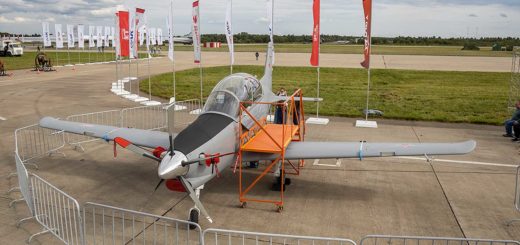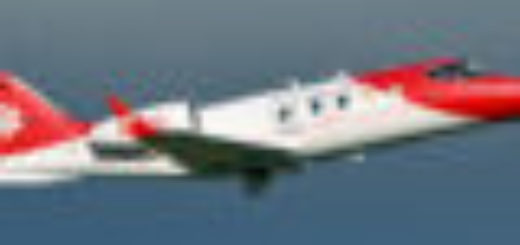Pentagon clears Navy to pick F/A-XX stealth fighter contractor after budget delays
{loadposition bannertop}
{loadposition sidebarpub}
Defense Secretary Pete Hegseth has authorized the Navy to select a contractor for its next-generation F/A-XX stealth carrier fighter, Reuters reported Tuesday. The decision signals progress after months of budget uncertainty and marks a major step in modernizing the U.S. carrier air wing for future Pacific conflicts.
Reuters reported on October 7, 2025 that Defense Secretary Pete Hegseth has cleared the Navy to downselect a contractor for the F/A-XX, the service’s next stealth carrier fighter that will replace the F/A-18E/F Super Hornet beginning in the 2030s. The report, based on U.S. officials and industry sources, says Boeing and Northrop Grumman are the finalists, with a public announcement possible this week after months of budget turbulence on Capitol Hill. The story also notes the Navy will continue buying more than 270 F-35C aircraft while F/A-XX proceeds on a separate track, underscoring a two-fighter carrier air wing for high-end conflict in the Western Pacific.Follow Army Recognition on Google News at this link
The U.S. Navy’s next-generation F/A-XX stealth fighter will feature extended range, advanced low-observable design, internal weapons bays, and AI-driven networking to command drones and dominate contested skies far beyond the reach of today’s Super Hornet (Picture source: Boeing).
The future jet is expected to emphasize survivability and reach over the Super Hornet, adding very low observable shaping, internal weapons carriage, and a larger fuel fraction to push carrier air wing ranges back out in an anti-access environment. Navy leaders have repeatedly framed F/A-XX as the quarterback for manned-unmanned teaming on the flight deck, orchestrating collaborative combat aircraft and the MQ-25 refueling drone to expand the air wing’s operational envelope deep into contested airspace.
The Super Hornet baseline remains a capable multirole striker with the AN/APG-79 AESA radar, 11 hardpoints, and Block III enhancements focused on networking and crewed survivability. In a typical strike configuration, the jet’s combat radius sits in the high-300-nautical-mile class, a figure the Navy has sought to stretch with conformal tanks and MQ-25 tanking. The official program literature lists APG-79 as the radar of record, and operational test history shows steady improvements in reliability and software stability through the early 2010s.
By contrast, senior officers and program documents point to F/A-XX adding a significant range increase over today’s strike fighters, with targets discussed publicly in the neighborhood of roughly a quarter greater reach and an emphasis on high-bandwidth sensors, resilient datalinks, and open mission systems that can fuse offboard cues and direct multiple loyal wingmen in real time. That emphasis on “reach, sense and team” is meant to hold maritime targets at risk from outside China’s anti-ship missile belts while preserving the carrier’s maneuver space.
Armament will likely center on internal carriage of AIM-260 class beyond-visual-range missiles and next-generation air-to-surface weapons sized for low-observable bays, complemented by external bring-back for permissive missions. The “quarterback” role suggests an onboard battle manager that can allocate targeting to CCAs, push decoys and jammers forward, and task the MQ-25 for dynamic refueling. The Navy has accelerated carrier-compatible CCA design studies with multiple vendors, a sign that the F/A-XX ecosystem will be built from day one around attritable adjuncts that extend magazine depth and sensing.
This project is a shift from the Super Hornet’s balanced survivability and payload model toward penetrating air superiority and long-range sea control. Where the Rhino depends heavily on standoff weapons, electronic attack support and tanker cycles to survive inside contemporary threat rings, the F/A-XX aims to restore organic penetration with stealth, persistent sensing and machine-assisted decision tools. In practice that means a carrier air wing able to conduct defensive counter-air over the strike group while simultaneously cueing massed CCA salvos against maritime targets hundreds of miles out, compressing the kill chain and complicating adversary targeting.
Today’s move follows months of turbulence in which Pentagon leaders weighed stretching the schedule while Congress pushed to keep momentum, warning of a capability gap as Super Hornets age into the 2040s. With Lockheed Martin out of the competition since March and a winner now imminent, the Navy is betting that recapitalizing the air wing around F/A-XX, F-35C, MQ-25 and CCAs is essential to blunt China’s air and maritime advances. The stakes are clear: without a sixth-generation carrier fighter, the Navy risks ceding the initiative over the vast ranges of the Indo-Pacific.

{loadposition bannertop}
{loadposition sidebarpub}
Defense Secretary Pete Hegseth has authorized the Navy to select a contractor for its next-generation F/A-XX stealth carrier fighter, Reuters reported Tuesday. The decision signals progress after months of budget uncertainty and marks a major step in modernizing the U.S. carrier air wing for future Pacific conflicts.
Reuters reported on October 7, 2025 that Defense Secretary Pete Hegseth has cleared the Navy to downselect a contractor for the F/A-XX, the service’s next stealth carrier fighter that will replace the F/A-18E/F Super Hornet beginning in the 2030s. The report, based on U.S. officials and industry sources, says Boeing and Northrop Grumman are the finalists, with a public announcement possible this week after months of budget turbulence on Capitol Hill. The story also notes the Navy will continue buying more than 270 F-35C aircraft while F/A-XX proceeds on a separate track, underscoring a two-fighter carrier air wing for high-end conflict in the Western Pacific.
Follow Army Recognition on Google News at this link
The U.S. Navy’s next-generation F/A-XX stealth fighter will feature extended range, advanced low-observable design, internal weapons bays, and AI-driven networking to command drones and dominate contested skies far beyond the reach of today’s Super Hornet (Picture source: Boeing).
The future jet is expected to emphasize survivability and reach over the Super Hornet, adding very low observable shaping, internal weapons carriage, and a larger fuel fraction to push carrier air wing ranges back out in an anti-access environment. Navy leaders have repeatedly framed F/A-XX as the quarterback for manned-unmanned teaming on the flight deck, orchestrating collaborative combat aircraft and the MQ-25 refueling drone to expand the air wing’s operational envelope deep into contested airspace.
The Super Hornet baseline remains a capable multirole striker with the AN/APG-79 AESA radar, 11 hardpoints, and Block III enhancements focused on networking and crewed survivability. In a typical strike configuration, the jet’s combat radius sits in the high-300-nautical-mile class, a figure the Navy has sought to stretch with conformal tanks and MQ-25 tanking. The official program literature lists APG-79 as the radar of record, and operational test history shows steady improvements in reliability and software stability through the early 2010s.
By contrast, senior officers and program documents point to F/A-XX adding a significant range increase over today’s strike fighters, with targets discussed publicly in the neighborhood of roughly a quarter greater reach and an emphasis on high-bandwidth sensors, resilient datalinks, and open mission systems that can fuse offboard cues and direct multiple loyal wingmen in real time. That emphasis on “reach, sense and team” is meant to hold maritime targets at risk from outside China’s anti-ship missile belts while preserving the carrier’s maneuver space.
Armament will likely center on internal carriage of AIM-260 class beyond-visual-range missiles and next-generation air-to-surface weapons sized for low-observable bays, complemented by external bring-back for permissive missions. The “quarterback” role suggests an onboard battle manager that can allocate targeting to CCAs, push decoys and jammers forward, and task the MQ-25 for dynamic refueling. The Navy has accelerated carrier-compatible CCA design studies with multiple vendors, a sign that the F/A-XX ecosystem will be built from day one around attritable adjuncts that extend magazine depth and sensing.
This project is a shift from the Super Hornet’s balanced survivability and payload model toward penetrating air superiority and long-range sea control. Where the Rhino depends heavily on standoff weapons, electronic attack support and tanker cycles to survive inside contemporary threat rings, the F/A-XX aims to restore organic penetration with stealth, persistent sensing and machine-assisted decision tools. In practice that means a carrier air wing able to conduct defensive counter-air over the strike group while simultaneously cueing massed CCA salvos against maritime targets hundreds of miles out, compressing the kill chain and complicating adversary targeting.
Today’s move follows months of turbulence in which Pentagon leaders weighed stretching the schedule while Congress pushed to keep momentum, warning of a capability gap as Super Hornets age into the 2040s. With Lockheed Martin out of the competition since March and a winner now imminent, the Navy is betting that recapitalizing the air wing around F/A-XX, F-35C, MQ-25 and CCAs is essential to blunt China’s air and maritime advances. The stakes are clear: without a sixth-generation carrier fighter, the Navy risks ceding the initiative over the vast ranges of the Indo-Pacific.






